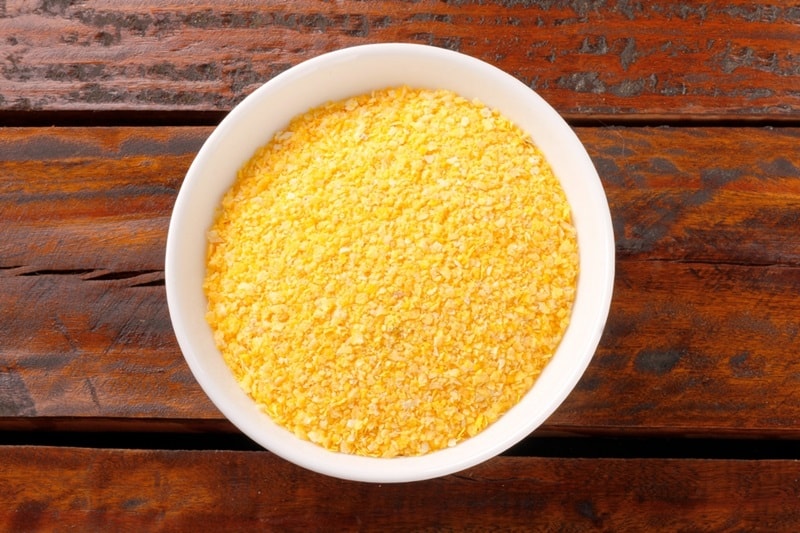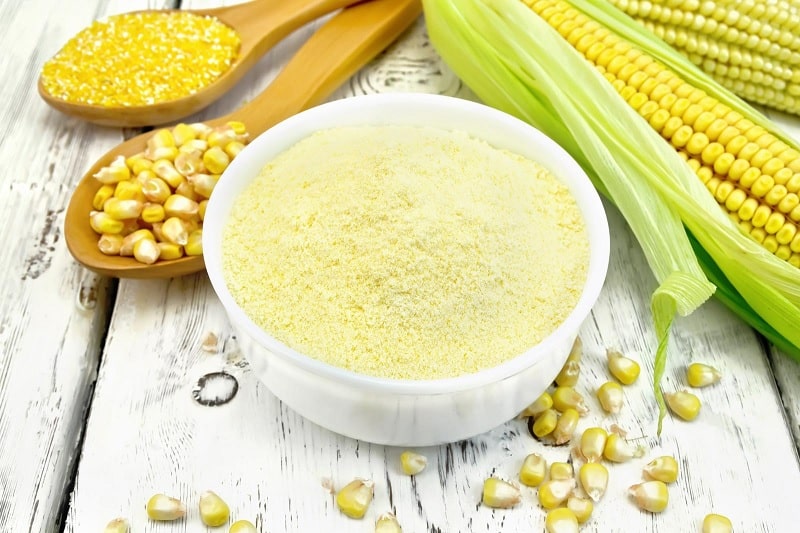According to our research, you can’t get masa harina in UK supermarkets.
However, you can find the traditional Mexican dough flour in a few other places, including:
- Amazon
- Various other online stores
- Health shops
You can get masa harina in three different varieties: yellow, blue, and white. You are more likely to be able to find the sweeter white type in stores and online.
Yellow and blue are quite rare. Blue is the least popular (and hardest to find) type of the three.
Are Masa and Masa Harina the Same Thing?
Masa and masa harina aren’t the same thing, but they are essentially two stages of the same dish.
Masa harina is the nixtamalized corn flour that, when added to water, becomes masa dough.
Masa dough, when cooked, can become tamales, tortillas, cornbread, empanadas, biscuits, pancakes, and plenty more Mexican/Spanish dishes.
Nixtamalized flour is the name given to types of flour that have been through a specific process. The first part of the process sees the maize kernels given a long soak.
The second part involves a good boil in a fluid that has a high alkali level. The third part is another wash. And then the fourth part requires hulling of the grains. That’s the rather short version of the tale.
Is Masa Harina Gluten-Free Flour?
Traditional masa harina flour is naturally gluten-free, as it’s made from either maize or corn.
You can get masa harina-style mixes these days, usually called something like “tortilla mix”. They are very similar to masa harina but are not always gluten-free.
Unless you are buying traditional masa harina flour—and it clearly states as such on the label—it is best to check the packaging for the ingredient list and health advisories.
Can You Make Masa Harina Flour at Home?
You can make masa at home, if you have masa harina flour.
Masa harina flour is flour that has been through the nixtamalization process. You can do this at home, but it takes some work. For some people, though, making this type of flour at home is the only way to get the blue or yellow varieties.
You will need quite the array of tools if you want to make your own masa harina flour at home, including a dehydrator, a grinder (a corn grinder is best, but you can actually use a salt/coffee grinder or a spice mill in a pinch), pickling lime or slaked lime (calcium hydroxide), and, of course, your corn.
You will also need to give yourself enough time to cook the corn, then leave the corn to soak overnight to let the calcium hydroxide do its work.
After it has soaked, you will be left with sludgy water and corn kernels; the former is the outer coating of the corn, which is technically known as pericarp. Once the sludge is removed and you’re left with the sloughed kernels, it’s time for the grinding process.
Once you have done all of that, you are left with masa harina flour.
Honest Food has a great how-to guide for making your own masa harina at home:
The translation of masa harina, from Spanish into English, is, quite literally, “dough flour”. Dough flour is a collective name for a few different, but similar, products in the UK, so make sure you read the packaging/ingredients before buying.
Can You Use Cornmeal Instead of Masa Harina?

You can use cornmeal in place of masa harina, but it’s not recommended for all recipes, and you will sometimes need to add other ingredients, such as flour, which can cause it to lose its gluten-free status.
Cornmeal is definitely not a good flour tool for very moist recipes. The two types of flour are manufactured differently, and they have different absorption capabilities.
Nixtamalized masa harina flour soaks up more fluid than its corn counterpart. Because of this, cornmeal can’t be shaped and positioned in quite the same way that masa harina can, making it unsuitable for recipes such as tortillas.

Kim is a writer with more than a decade of experience, and a food enthusiast. When she’s not spending her time writing about her favourite dishes, you can find her in the cake aisle of her local supermarket, or making a mess in the kitchen.


